Over the past six months we’ve noticed a trend – most of our clients are interested in installing Tableau Server on Linux (opposed to Windows). In fact at the recent Tableau Conference, over 25% of new Server installs were attributed to Linux distributions.
With that sense of growing popularity, we wanted to take some time and walk through a basic installation on Linux. This is similar to our previous post deploying Tableau Server on Azure and is not meant to be a template for sophisticated installations. Instead you can consider this a primer of what you can expect when installing on a Linux machine.
To start the process you’ll need a fresh copy of Linux on a machine that meets Tableau Server’s minimum hardware requirements (64-bit 2 core processor, 8 GB RAM, 15 GB free space). We chose to install Ubuntu LTS 16.04 via flash memory onto a system with 16 GB RAM, 500 GB SSD, and an Intel i7 4770 3.4 GHz quad-core processor. The server was re-purposed from a previous life as a mid-weight gaming PC.
At time of writing we downloaded Tableau Server 2019.1.1, selecting the .deb options which aligns with the operating system we selected.
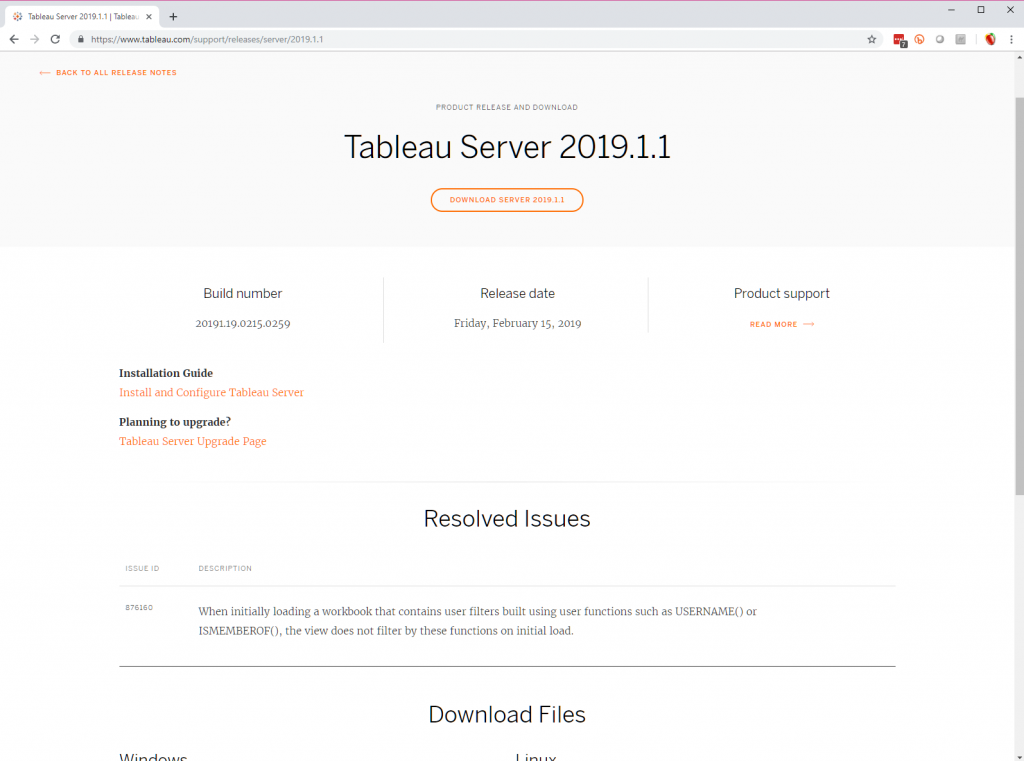
Throughout the process we like to reference the Everybody’s Install guide that Tableau provides. It helps ensure we don’t forget any steps and use the major content chapters as guides on the outline of the entire process.
Following along with Step 1: Install Tableau Server package, we quickly went through the process of updating applications on the system.
sudo apt-get update
The installation process then directs you to install gdebi, which allows installation of deb packages (the file type that the Tableau Server install package is).
sudo apt-get -y install gdebi-core
Finally it’s time for the good stuff – actually installing the software itself onto the server. To do this you’ll run the last command, with the expectation that you’ll know to navigate to the directory where the file is located. For our installation the location is Downloads.
cd Downloads
sudo gdebi -n tableau-server-2019-1-1_amd64.deb
This is a relatively quick process and gives you a good ending snippet of code for next steps – to run the initialization script and accept the EULA. They’ve provided the full path of the script, so it’s best to start at the root when executing.
sudo /opt/tableau/tableau_server/packages/scripts.2019.1.19.0215.0259/initialize-tsm --accepteula
And as the last 2 lines indicate, you’re now prompted to login to Tableau Services Manager (TSM) for the first time using your administrator credentials (which are most likely the username and password you’re already logged into).
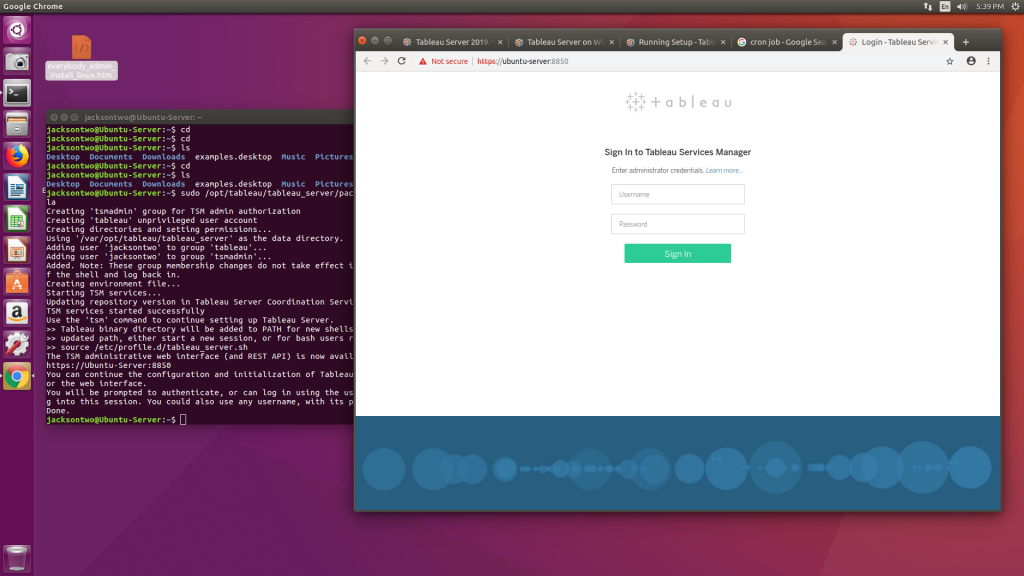
There’s then a 4 step process to register your Tableau Server and do some initial configuration. The first option you’ll be hit with is Identity Store. I don’t remember this in the past, but there’s now a handy mouse-over detail to the right of the option box to help guide you on what to select. We chose Local – meaning we won’t be relying on Active Directory for user authentication.
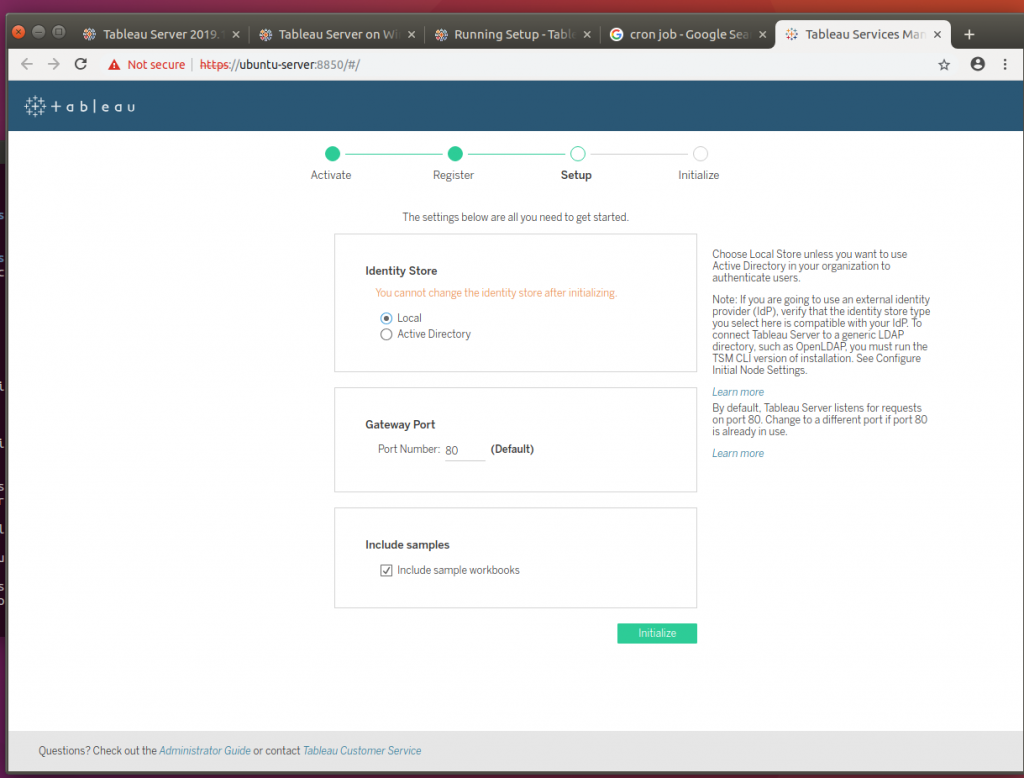
Tableau Server then runs through it’s final initialization process, displaying in a small window what it’s doing along the way. For reference, this took about 10 minutes to complete.

You’ll then be prompted to set up a Tableau Server Administrator account. This isn’t necessarily the same username and password as the machine the Server is on, rather it’s the user name of the person who will be managing the Tableau Server itself.

At this point you’ll jump directly into a fresh copy of Tableau Server, where it even includes an alert to let you know that the samples are still being generated.
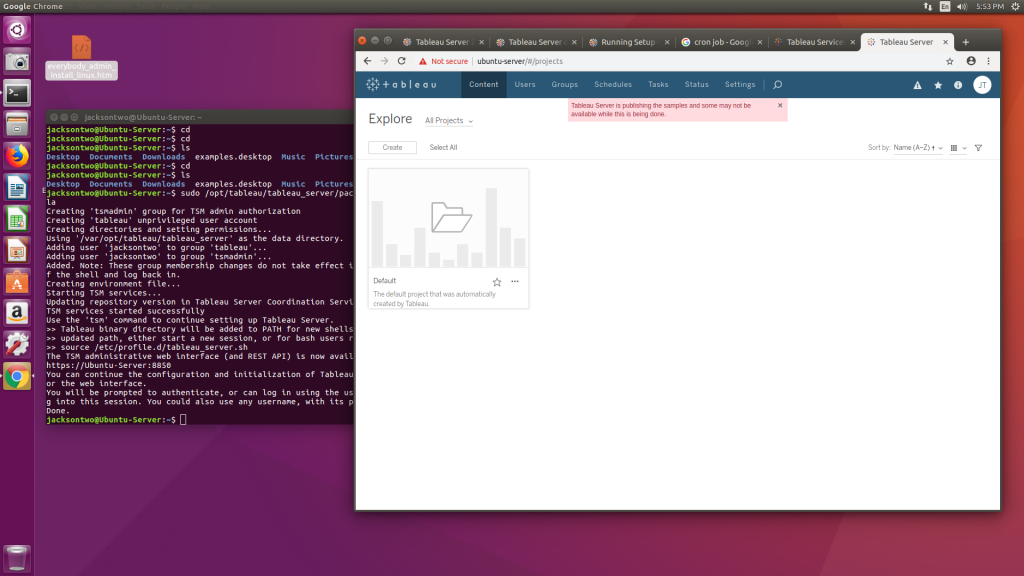
With the Server finally installed we like to go exploring in TSM (Tableau Services Manager). This is the front-end GUI that Server Administrators can access to do a variety of tasks, including restarting the server, adding licenses, generating logs, enabling SSL, and email/SMTP configuration.
We struggled in the past to find a picture of every screen within TSM, so we decided to include a gallery of each screen below. Click on each picture to see a full size version.
The last required step to getting started (at least from our perspective) is ensuring the administrator views work. This requires downloading an additional PostgreSQL driver for Linux (it is not bundled in the install). You’ll see this if the driver isn’t downloaded or isn’t installed properly.

Our initial path forward was to go to Tableau Driver Downloads and download the appropriate driver (as listed).
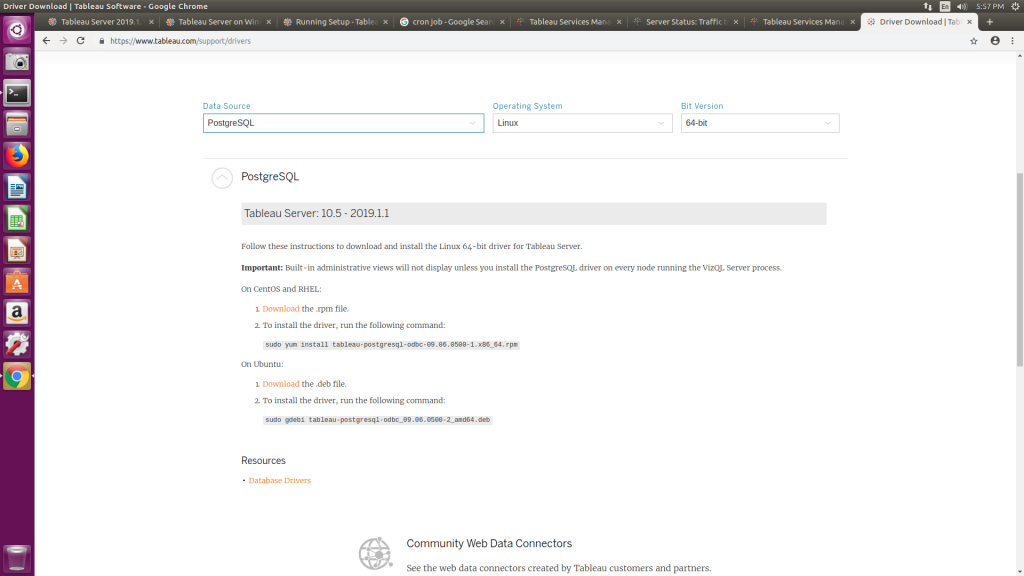
After downloading you’ll be able to run the command they provide in the terminal to install the driver. Remember to navigate to the directory the file is in (Downloads) first.
sudo gdebi tableau-postgresql-odbc_09.06.0500-2_amd64.deb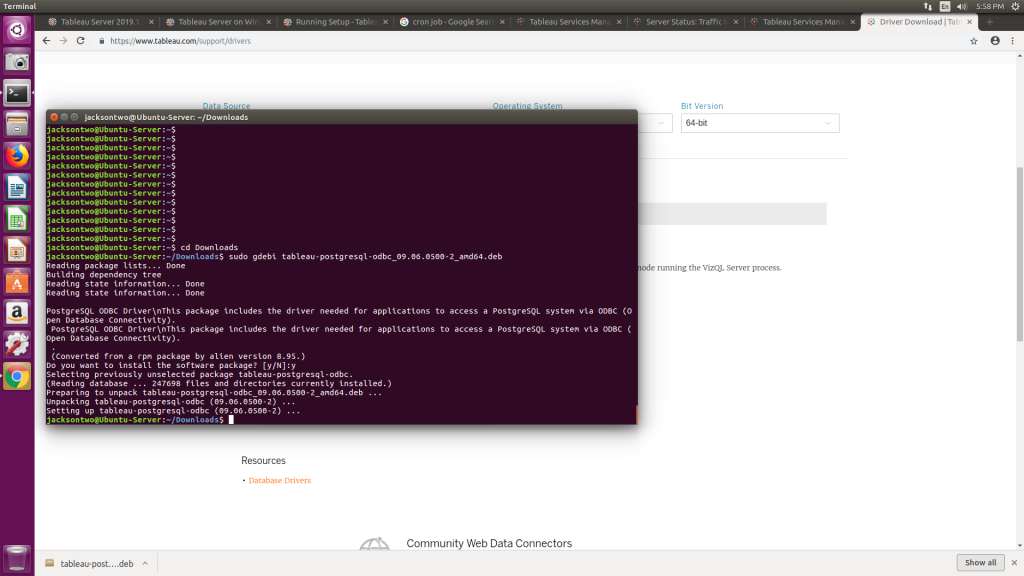
Worth mentioning, after we installed this driver the Administrator views were still not visible. And from our perspective it seems that there was an issue with the driver itself. So we chose to downgrade to an older version (that we knew worked from a previous install). We were able to locate driver version 9.5.3 via AWS.
https://s3-us-west-2.amazonaws.com/tableau-quickstart/tableau-postgresql-odbc_9.5.3_amdb64.debAnd after installing we finally got a look at those admin views!
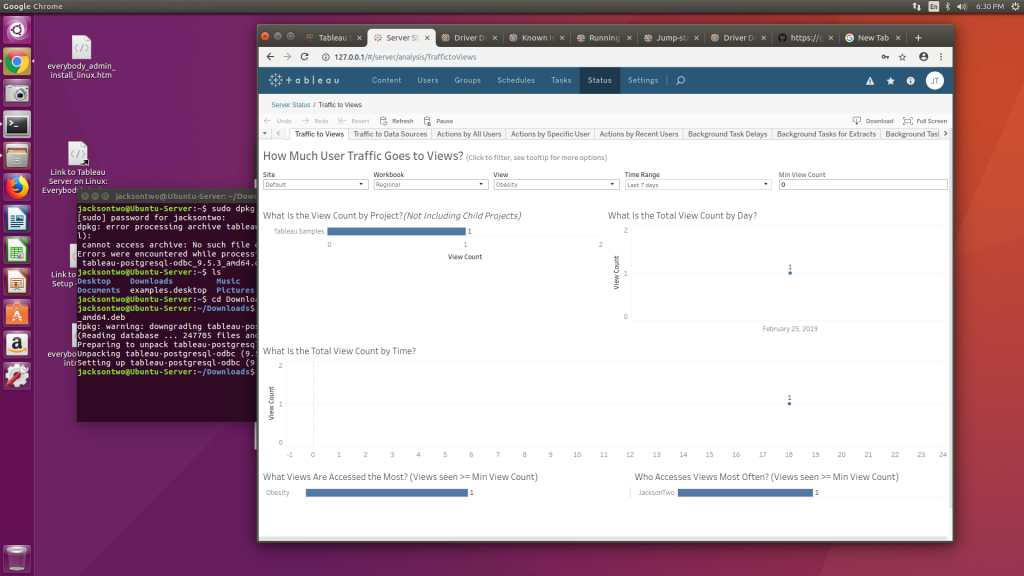
Two more steps we wanted to try out after installing. The first was installing tabcmd and making sure we could connect to the server. By now you’re a pro at navigating to the folder where the install is (and you know to pick the .deb file) – so getting to this step should be pretty easy.
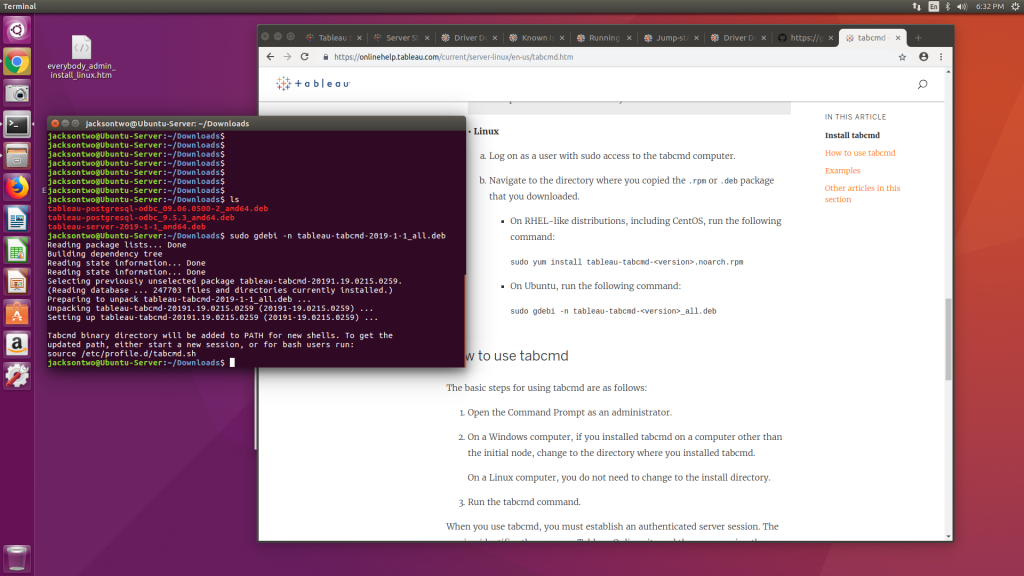
And our last step was to ensure the tsm command line client was working and to try out a command only available at this level vs. the TSM GUI. We chose to rename our server to JacksonTwo.
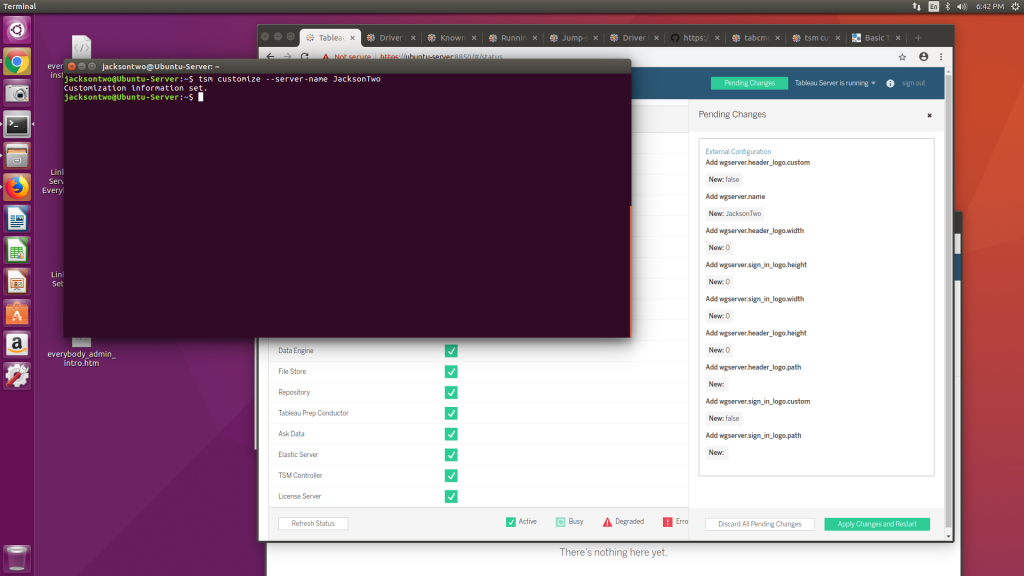
After renaming you’ll notice that we then navigated to the GUI TSM to see the pending changes that needed to be applied. The server required a restart for the name change to be applied. The final result is below, which was also taken on a Windows machine on our network.

And with that, a fresh install of Tableau Server on Linux has been installed and quickly customized. Keep a close eye on the blog – over the coming posts we’ll be continuing to dive deeper into Tableau Server.

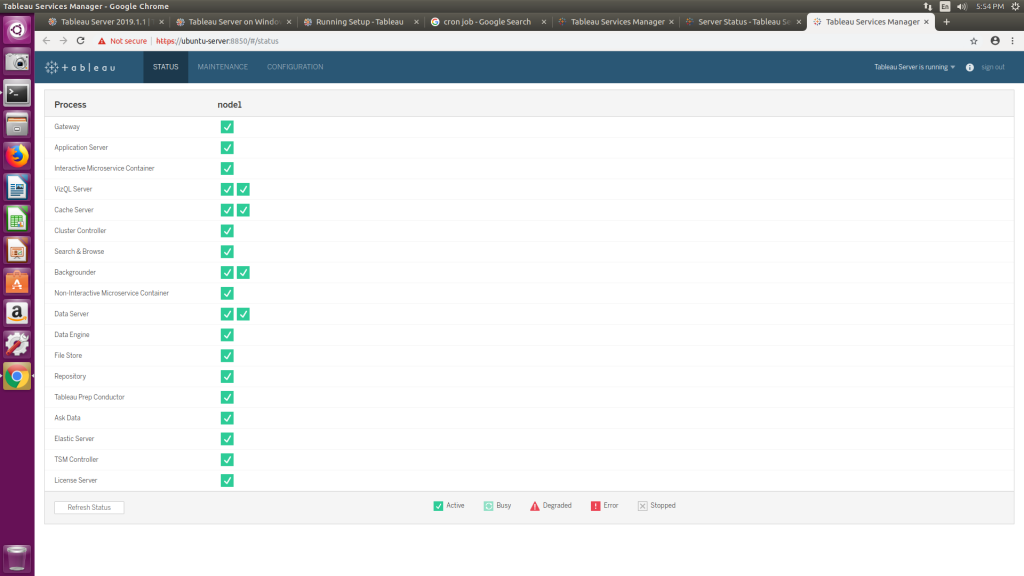
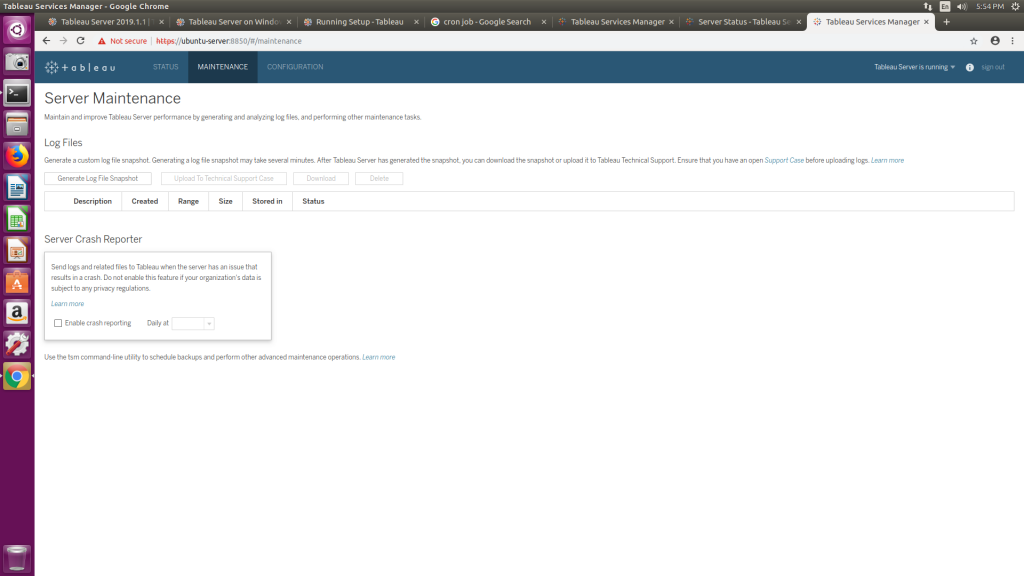
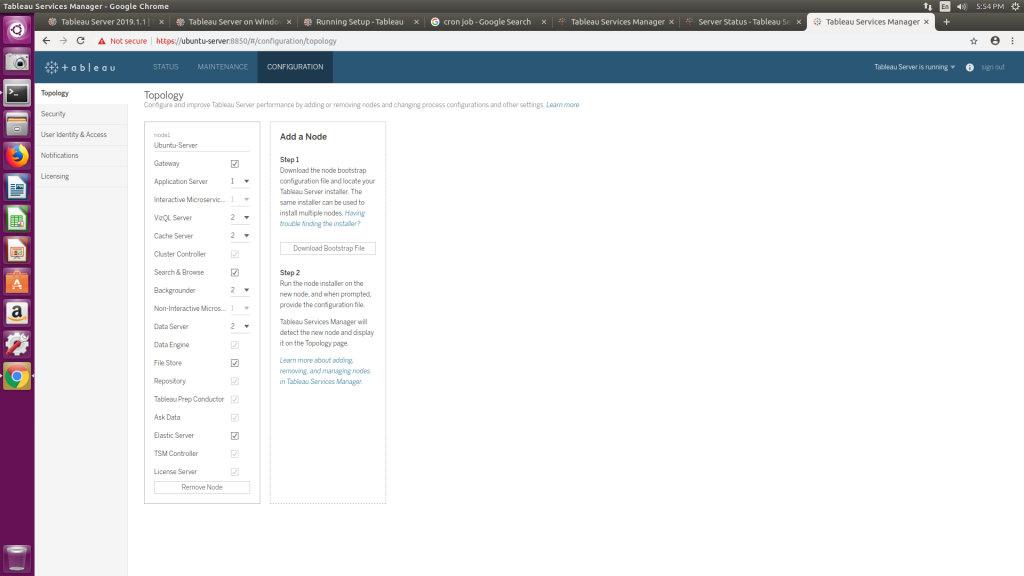
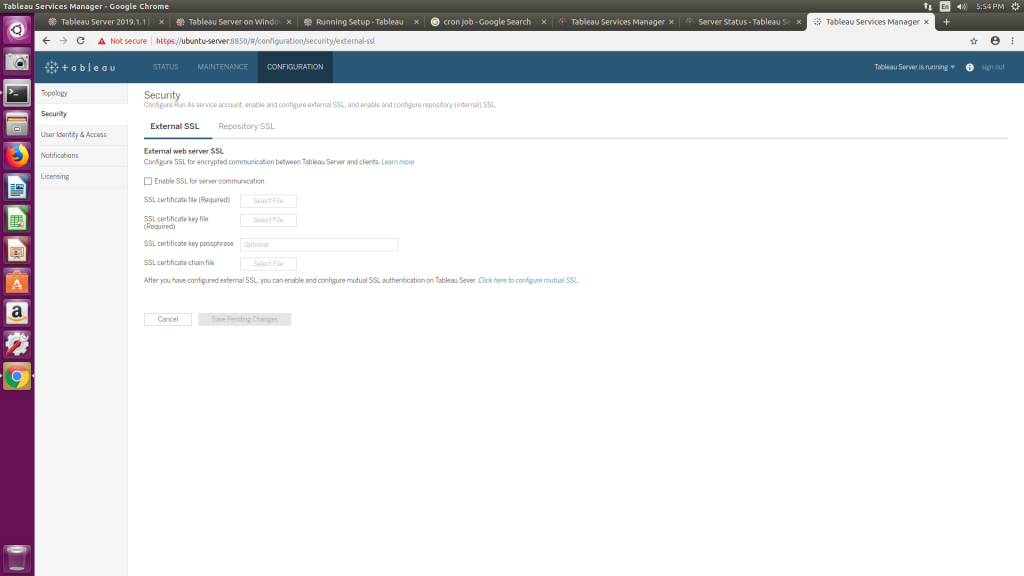
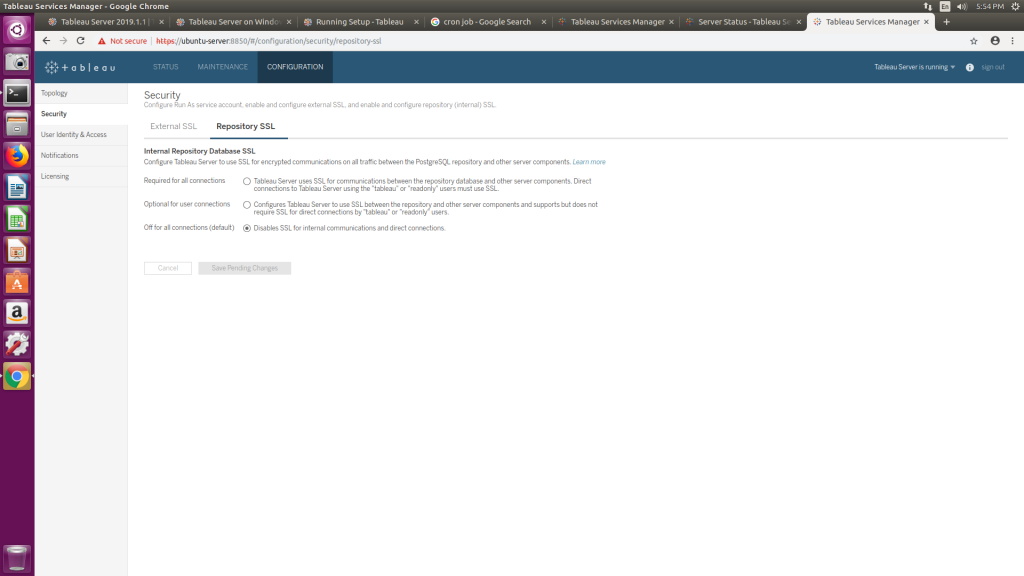
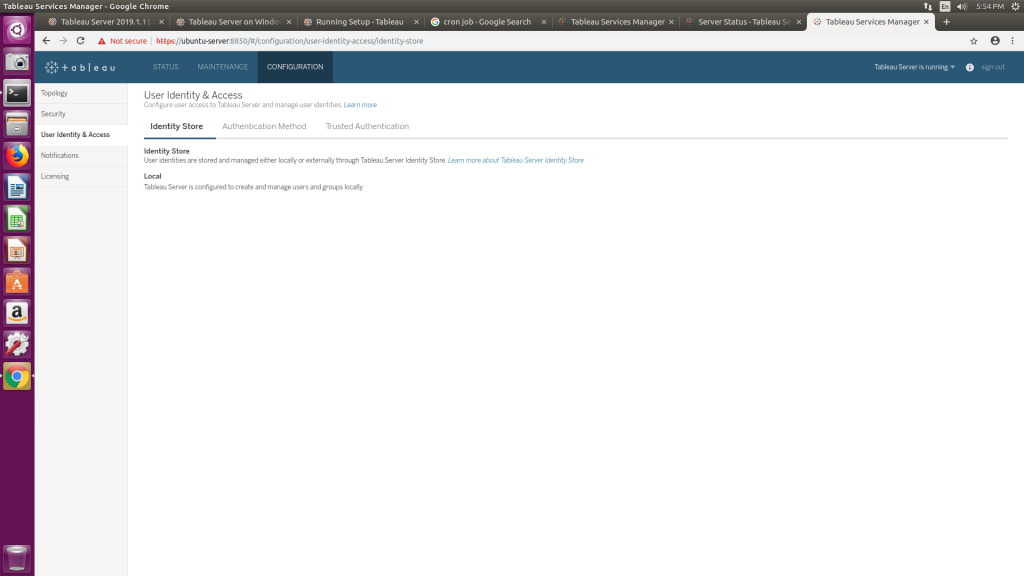

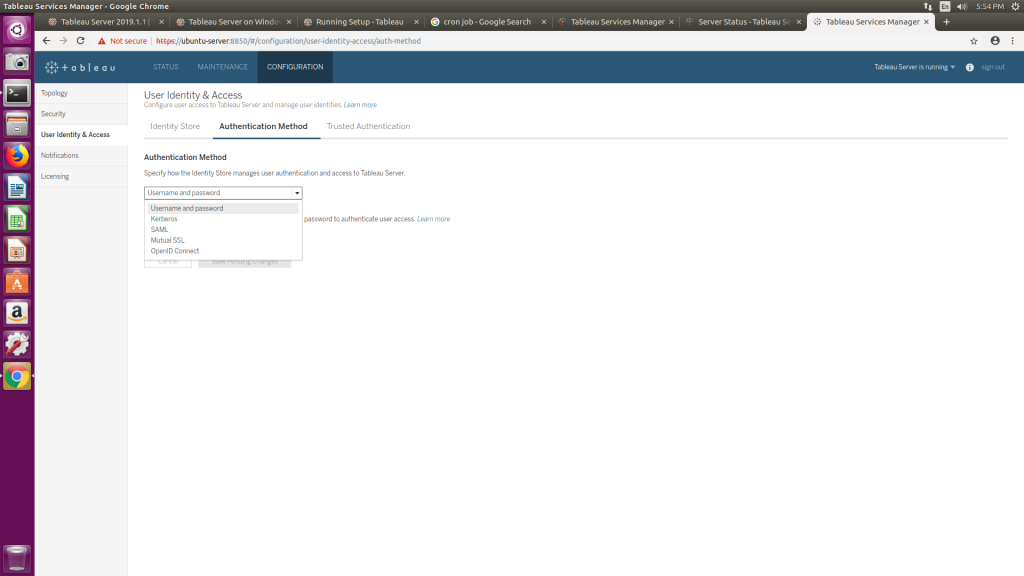


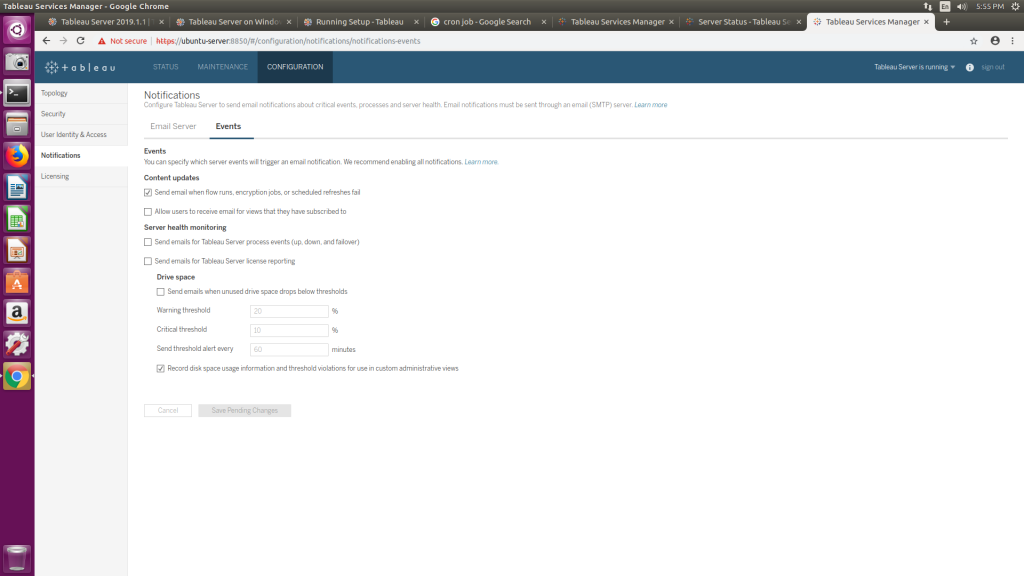
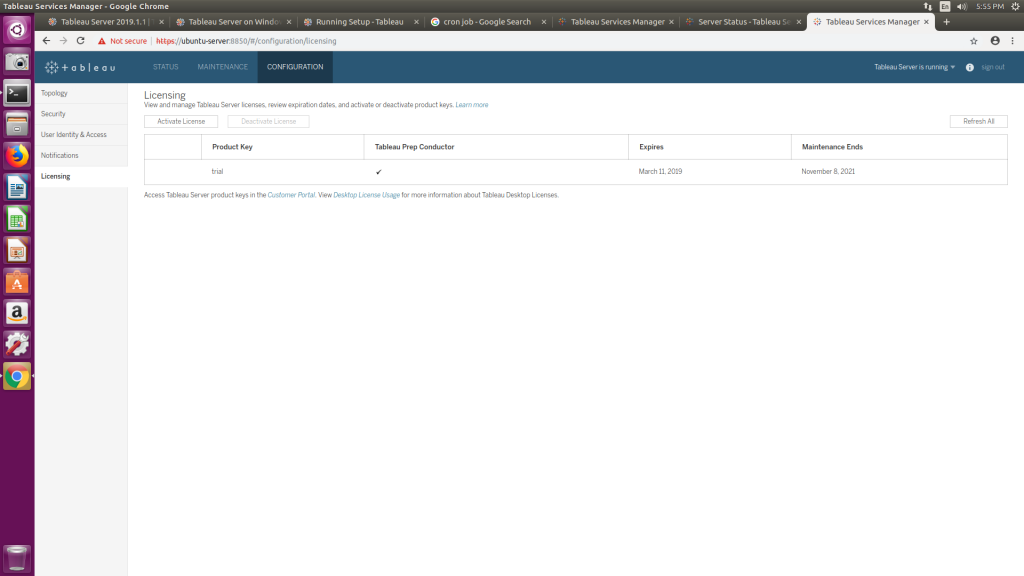
Leave a Reply